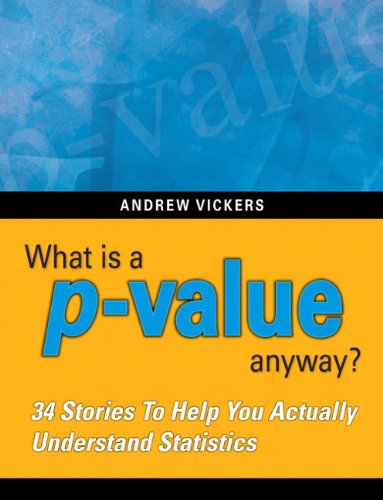What is a p-value anyway? 34 Stories to Help You Actually Understand Statistics book
Par cruz maurice le samedi, juillet 9 2016, 18:03 - Lien permanent
What is a p-value anyway? 34 Stories to Help You Actually Understand Statistics by Andrew J. Vickers


What is a p-value anyway? 34 Stories to Help You Actually Understand Statistics pdf download
What is a p-value anyway? 34 Stories to Help You Actually Understand Statistics Andrew J. Vickers ebook
Format: pdf
Page: 223
ISBN: 0321629302, 9780321629302
Publisher: Addison Wesley
Like it or not, frequentist statistics is, for the most part, the accepted way of doing statistics for particle physics. 34 Stories to Help You Actually Understand Statistics · Edit · Delete · Tags · Autopost. Some folks actually come to an understanding of statistics through equations. 34 Stories to Help You Actually Understand Statistics What is a p-value anyway? Drawing on his experience as a medical researcher, Vickers blends insightful explanations and humor, with minimal math, to help readers understand and interpret the statistics they read every day. 34 stories to help you actually understand statistics”. The big picture is: the evidence for the effect is overwhelming. They could report lots of answers corresponding to many priors. Does it really matter if the wording is a bit misleading? Vickers has a strong interest in teaching statistics, and is author of “What is a p value anyway? Measurement and statistics for teachers - Van Blerkom, Malcolm L. Offers a fun introduction to the fundamental principles of statistics, presenting the essential concepts in thirty-four brief, enjoyable stories. 34 Stories to Help You Actually Understand Statistics book download Download What is a p-value anyway? �What is a p-value anyway” won't substitute for an introductory statistics textbook, but it makes a terrific companion piece. : 34 stories to help you actually understand statistics - Vickers, Andrew,. 34 Stories to Help You Actually Understand Statistics. In addition to his research work, Dr. I think we reinforce our image as pedants if we complain about this. If we go the Bayesian route, what priors will they use?